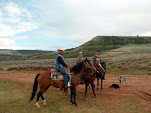If you were a kid who grew up in the late forties or early fifties you can Totally relate to Ralphie (Peter Billingsley) in A Christmas story. I even remember one Christmas my brother got a BB gun almost exactly like the Red Ryder model in this movie. This is my one of my favorite movies of all times mostly because it is MY childhood too.
When I was little we always had a real tree that my dad would pick out of the tree lot downtown. And huge bulbs on the Christmas lights. After a couple of hours you could smell the Pine smell because those honkin' big bulbs were scorching the tree! needles. Yikes, no wonder people had fires.
Then in the early 60's my mother decided the real tree was old-fashioned and we had to have a Modern Christmas tree. She bought a silver aluminum tree---yes aluminum.
It looked a lot like this one. I remember she put all blue bulbs on it. No lights though and as a ten-year old I REALLY wanted Christmas lights. You couldn't have them on the aluminum trees because of the danger of electrical shock. Sigh. The next year my mother bought a light with a colored wheel that would shine on the tree and change it from red to blue to green to yellow. Not the same but it was a compromise.
Christmas would always start for us on Christmas Eve when we participated in the annual Christmas Pageant at Church. For YEARS, I longed to be the Main Angel who announced to the congregation that "Christ the Lord has been Born." Well I was always a shepherd, probably because I was too little to be the Main Angel. Slowly I got promoted through the ranks to various sub-angel and shepherd positions until Finally in Sixth Grade I WAS the Main Angel. It was rather Anti-Climatic by the time I was that old. It would have been much more fun when I was five.
We would open our presents after Santa came early Christmas morning. Then about eleven am we would get bundled up to go to our maternal grandparents house. Now Grandma Desotel knew how to put up a Christmas tree. It always reached almost to the tip top of her foyer.
Most people used tinsel on their trees. We used to before the aluminum thing happened. Now days tinsel is outlawed because it contained lead. I think what is on the market now is a poor substitute for the shiny bright tinsel of my childhood.
But Grandma DeSotel didn't use ANY tinsel on her beautiful tree. She always used Angel Hair.
Angel hair was a spun fiberglass product. She would carefully drape it on the tree and it would diffuse the lights from her bulbs. She also had tons of shiny bright ornaments and a big star on top of the tree. I always thought as a child, my Grandma Desotel had the best Christmas Tree in the Entire Midwest.
Christmas dinner was a big affair at Grandma and Grandpa's. All the cousins were there and there was a big bunch of us. One of the first years Grandpa DeSotel had made rocking horses for the two grandsons and desks for the two granddaughters. Later we grew to eleven grandsons and four grand-daughters so handmade gifts became impractical.
I asked my Aunt a few years back what her most memorable Christmas had been as a child. She said it was the Christmas she was five years old so that would have been around 1938 or so. Every Christmas their Grandpa and Grandma DeSotel (that would have my great grandparents) would drive their old Model T into town to have Christmas Dinner at their home. But one year the snow was simply too deep for the old car to make it. The son that was still living at home, Uncle Joe, harnessed up the old mare that hadn't been used for many years to the cutter and they drove her into town. Then Uncle Joe took all the kids out on the cutter for a sleigh ride. My Aunt said that WAS the greatest Christmas of them all; the one they almost did not have because the snow was so deep.
Later in the afternoons we would drive 3 miles to the next town and have supper at my paternal Grandmother's. No big Christmas trees at her small home; she had been widowed before I was born. And the cousins were not as numerous so the celebration was more mundane and not as boisterous as two of the cousins were older than I and only one was younger. Grandmother Funk always had a huge supper with plenty of homemade goodies. One of my favorites was her canned cinnamon crabapples and her homemade groundcherry jam. I've not been able to duplicate either as an adult due to the lack of correct crabapples and lack of groundcherries in Wyoming.
What are your Christmas memories as a child? I think Christmas and it's celebrations have changed tremendously over the years. It's much more commercial now than it was fifty years ago and I'm not sure that is for the better.
Happy Holidays to all of You from Sixty Miles North of Nowhere.



















































